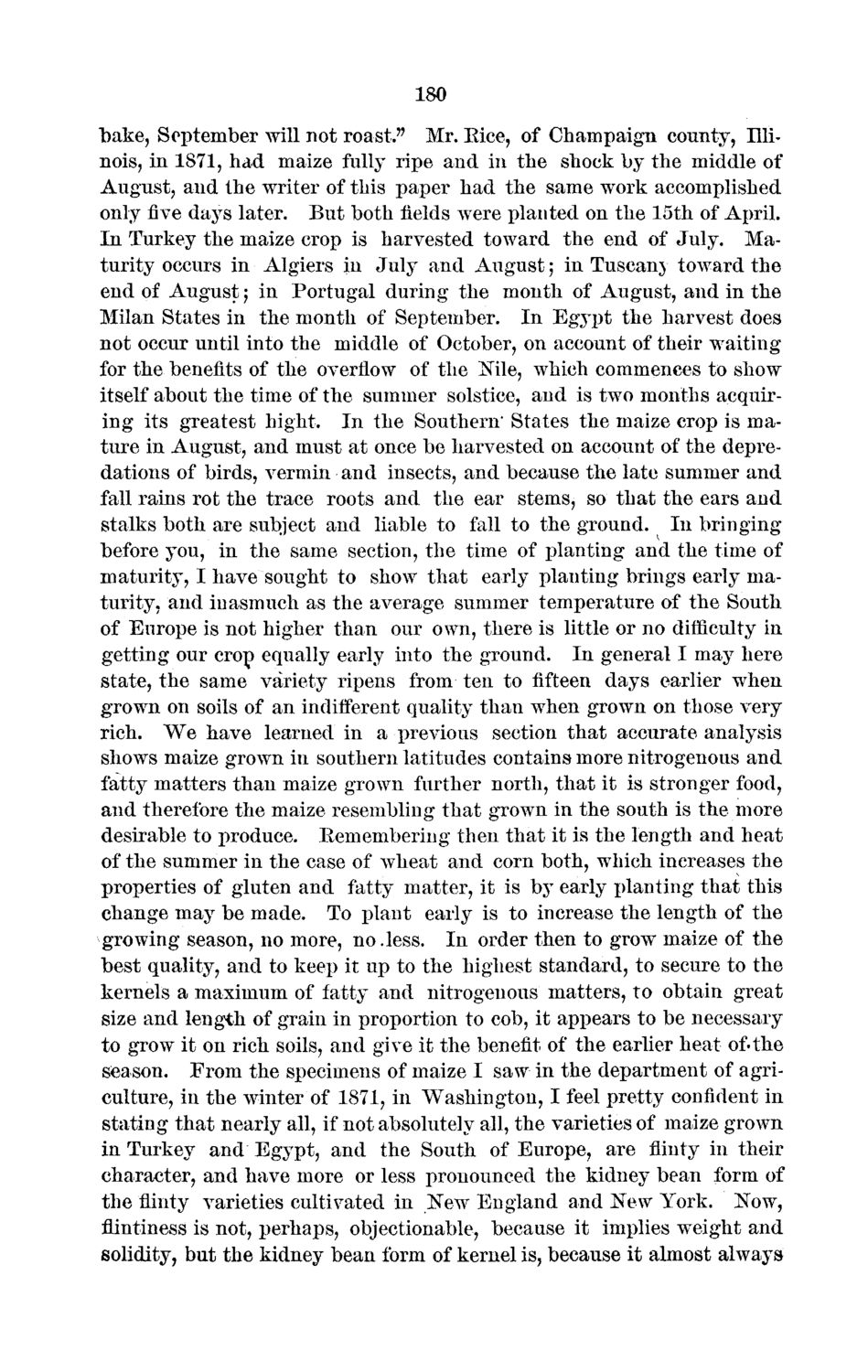| |
| |
Caption: Board of Trustees Minutes - 1872
This is a reduced-resolution page image for fast online browsing.

EXTRACTED TEXT FROM PAGE:
180 bake, September will not roast." Mr. Eice, of Champaign county, Illinois, in 1871, had maize fully ripe and in the shock by the middle of August, and the writer of this paper had the same work accomplished only five days later. But both fields were planted on the loth of April. In Turkey the maize crop is harvested toward the end of July. Maturity occurs in Algiers in July and August; in Tuscan\ toward the end of August 5 in Portugal during the month of August, and in the Milan States in the month of September. In Egypt the harvest does not occur until into the middle of October, on account of their waiting for the benefits of the overflow of the Nile, which commences to show itself about the time of the summer solstice, and is two months acquiring its greatest hight. In the Southern' States the maize crop is mature in August, and must at once be harvested on account of the depredations of birds, vermin and insects, and because the late summer and fall rains rot the trace roots and the ear stems, so that the ears and stalks both are subject and liable to fall to the ground. In bringing before you, in the same section, the time of planting and the time of maturity, I have sought to show that early planting brings early maturity, and inasmuch as the average summer temperature of the South of Europe is not higher than our own, there is little or no difficulty in getting our crop equally early into the ground. In general I may here state, the same variety ripens from ten to fifteen days earlier when grown on soils of an indifferent quality than when grown on those very rich. We have learned in a previous section that accurate analysis shows maize grown in southern latitudes contains more nitrogenous and fatty matters than maize grown further north, that it is stronger food, and therefore the maize resembling that grown in the south is the more desirable to produce. Eemembering then that it is the length and heat of the summer in the case of wheat and corn both, which increases the properties of gluten and fatty matter, it is by early planting that this change may be made. To plant early is to increase the length of the growing season, no more, no.less. In order then to grow maize of the best quality, and to keep it up to the highest standard, to secure to the kernels a maximum of fatty and nitrogenous matters, to obtain great size and length of grain in proportion to cob, it appears to be necessary to grow it on rich soils, and give it the benefit of the earlier heat of.the season. From the specimens of maize I saw in the department of agriculture, in the winter of 1871, in Washington, I feel pretty confident in stating that nearly all, if not absolutely all, the varieties of maize grown in Turkey and Egypt, and the South of Europe, are flinty in their character, and have more or less pronounced the kidney bean form of the flinty varieties cultivated in New England and New York. Now, fiintiness is not, perhaps, objectionable, because it implies weight and solidity, but the kidney bean form of kernel is, because it almost always
| |